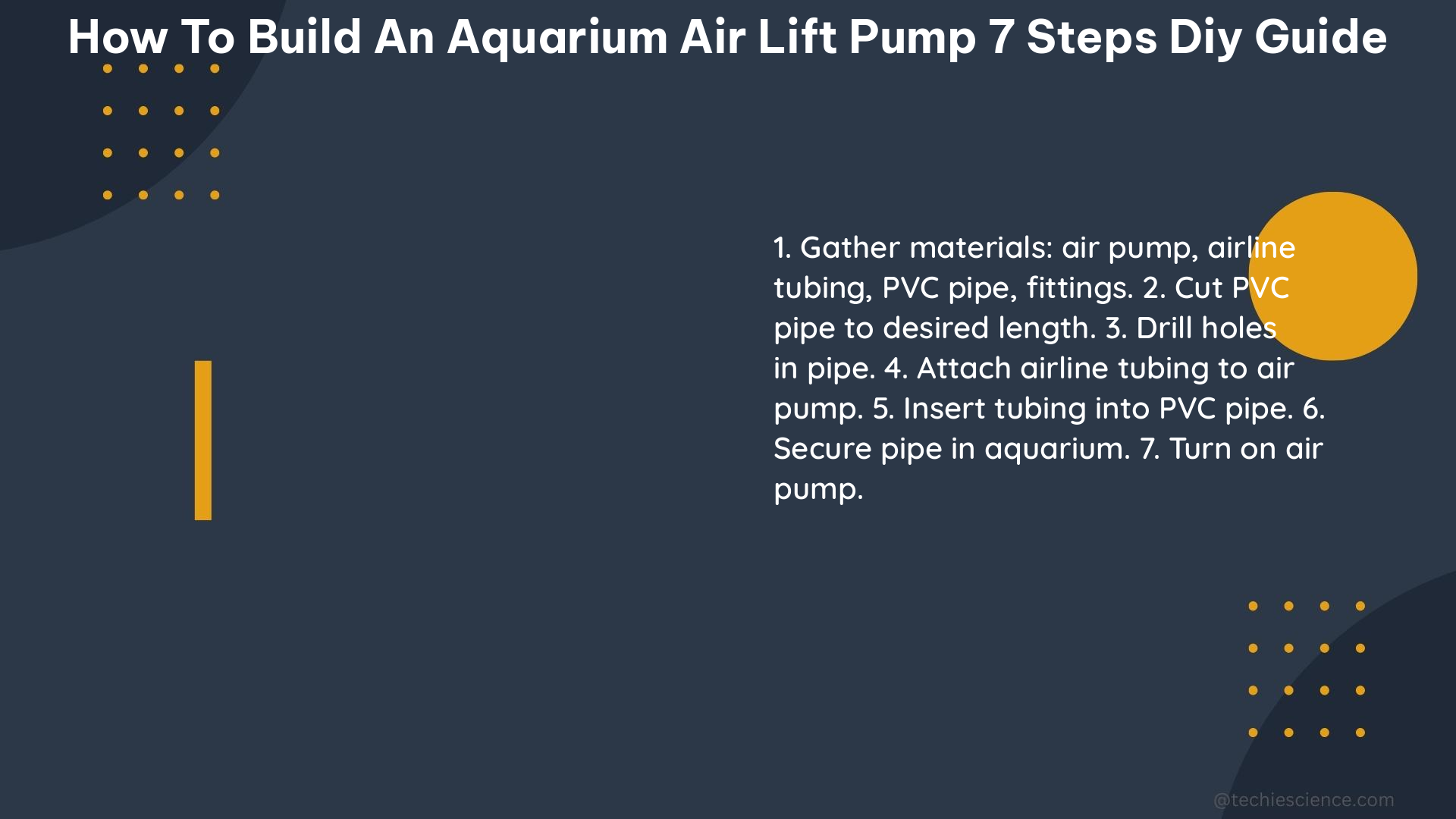Building an aquarium air lift pump is a cost-effective and efficient way to create water circulation in your aquarium. This 7-step DIY guide provides detailed instructions and technical specifications to help you construct a reliable and high-performing air lift pump for your aquarium.
Materials Required
To build an aquarium air lift pump, you will need the following materials:
- 1/2″ acrylic tube
- 3/16″ ID vinyl tubing
- Air stone
- Check valve
Step-by-Step Guide

Step 1: Cut the Acrylic Tube
Measure the desired height of your aquarium and use a saw to cut the 1/2″ acrylic tube to the appropriate length. Ensure that the tube fits securely within your aquarium setup.
Step 2: Attach the Air Stone
Connect the air stone to the 3/16″ ID vinyl tubing using a hose clamp or other suitable method. This will be the air intake for the pump.
Step 3: Insert the Air Stone
Carefully insert the vinyl tubing with the attached air stone into the acrylic tube, making sure that the air stone is fully submerged in the aquarium water.
Step 4: Install the Check Valve
Attach the check valve to the top of the acrylic tube. This valve will prevent water from flowing back into the pump, ensuring efficient operation.
Step 5: Connect the Air Pump
Connect the other end of the vinyl tubing to an air pump. Choose an air pump with a flow rate and pressure that meets the technical specifications for your aquarium setup.
Step 6: Position the Air Pump
Place the air pump in a location where it will not be disturbed, and plug it in to a power source.
Step 7: Adjust the Airflow
Turn on the air pump and adjust the airflow as needed to create the desired water circulation in your aquarium.
Technical Specifications
To ensure the proper functioning of the air lift pump, it is important to consider the following technical specifications:
Airflow Rate
The airflow rate of the pump should be sufficient to create the desired water flow in the aquarium. A flow rate of 4 liters per minute (LPM) is a common recommendation for aquarium air lift pumps.
Pressure
The pressure of the pump should be sufficient to lift the water to the desired height in the aquarium. A pressure of 0.016 megapascals (MPa) is a common recommendation for aquarium air lift pumps.
Discharge Hose Diameter
The discharge hose should be sized appropriately for the pump and the aquarium. A discharge hose with a diameter of 3/16 inches is a common recommendation for aquarium air lift pumps.
By following this 7-step DIY guide and considering the technical specifications, you can build a reliable and efficient aquarium air lift pump that will provide the necessary water circulation for your aquarium ecosystem.
References
- How to Build an Aquarium Air Lift Pump (7 Steps DIY Guide) – LinkedIn
- Is there a relatively inexpensive way to measure the airflow of an air pump? – Reddit
- DIY: How to Set Up a Fish Tank : 9 Steps (with Pictures) – Instructables
